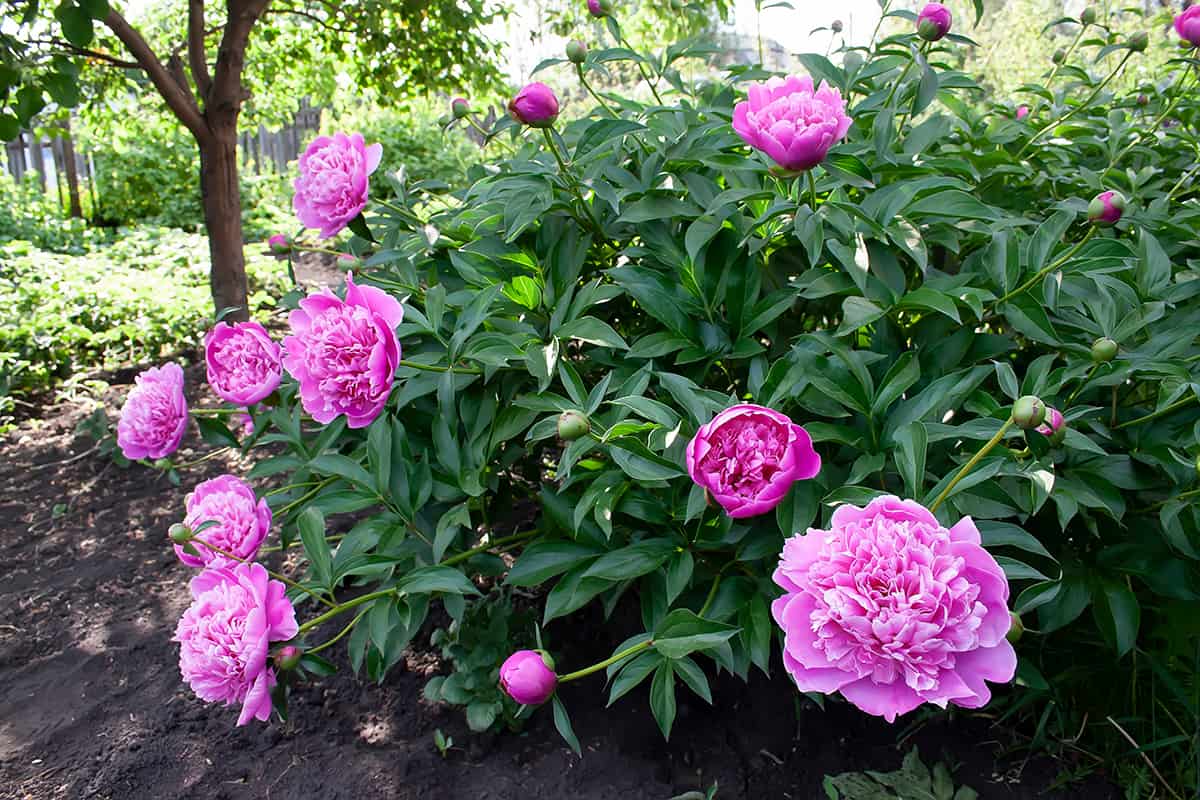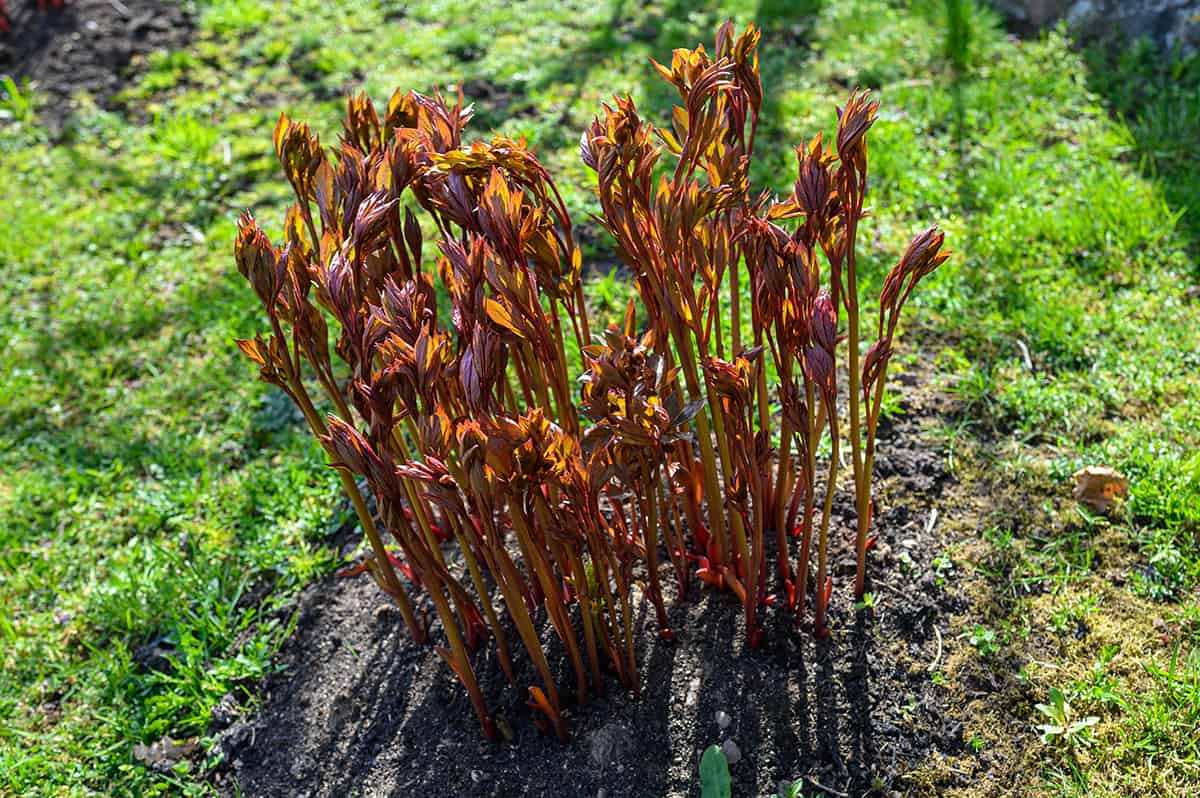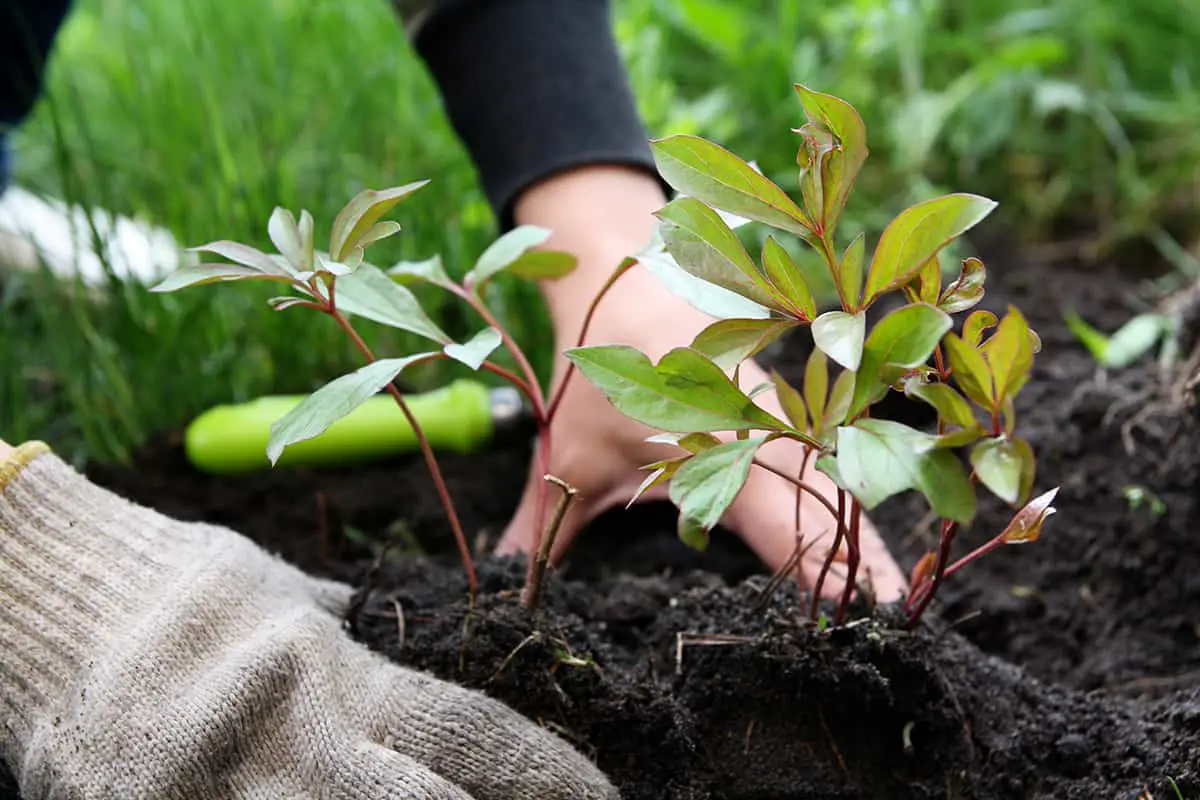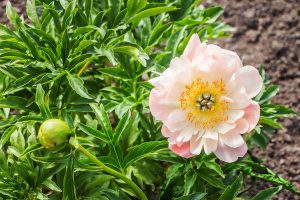Peonies are typically very low-maintenance plants that can live for a long time with minimal care.
The key thing you need to get right for your peony is planting it in the right location – this requires considering lots of factors involved such as light, soil, and how deep you plant your peonies. If you do this, your peony will mostly look after itself for decades to come.
Table of Contents
How Much Light Do Peonies Need?

When deciding on where in your garden to plant your peony, you should be thinking about how much light that spot receives. The direction your garden is facing is going to determine the lighting levels since the sun rises in the east and sets in the west.
Peonies thrive in well-lit areas, though they also enjoy some respite from the sun. If you live in a cooler climate, your peonies will fare best in a position of full sun, whereas peonies growing in warmer climates will do better in a spot that gets dappled sunlight, or is partially shaded in the heat of the afternoon.
Take note of the brightest areas in your garden, and which areas might be shaded by trees, shrubs, fences, or nearby buildings. For herbaceous peonies and Itoh peonies, you should be planting them in a spot that will guarantee them around 6 to 8 hours of sunlight each day.
What Soil is Best for Peonies?
As well as choosing the best location for your peony plant, you should also be considering the type of soil you are planting it in. Peonies love to grow in rich, fertile soil, so if you want to help your plant to thrive, you can amend the soil before you settle your peony into it. If your native soil is not very fertile, then you can add some organic compost to it, and mix it in with a shovel.
Peonies will perform best in well-draining soil, so you may also need to amend the soil to help it drain better. You can do this by adding sand or perlite to the soil. Most peonies will adapt well to various soil types, including clay soils, loamy soils, and sandy soils, though they cannot tolerate waterlogged soils. Your peonies stand a better chance of growing into healthy, well-established plants if you are able to get them off to the best start with fertile, well-draining soil.
How Deep Should Peonies be Planted?
Planting your peonies in the right location is vital, and this also includes the depth at which you plant them. It’s important to note that both herbaceous peonies and Itoh peonies need to be planted at a shallow depth, as this will help to encourage the plant to flower. If the plant is settled too deep into the soil, a common issue is that it will produce a lot of foliage, but struggle to produce flowers.
The crown of your peony root ball should only sit at around 1 to 2 inches below the surface of the soil, which is a more shallow position than you would plant most other plants. Although you need to plant these peonies at a shallow depth, this does not mean the soil should be shallow. In fact, peonies will grow best in deep soil which allows their roots to spread out.
Tips for Planting Peonies:

Allow enough space
When you are planning out where to plant your peonies, think about the plants in relation to other species you have growing nearby. Many peony plants will spread to be as wide as they are tall, and some will grow to have an even greater width measurement than their height measurement.
Because of this, you need to ensure the peony is planted in a position where it will have room to grow sideways. Peonies don’t like to battle for moisture and nutrients in the soil, so this is another reason why peonies should not be planted too close to other plants. Allowing a reasonable distance between your peony and other plants will also encourage better airflow, which helps to minimize the chance of fungal disease.
Consider lighting
Peonies love the sun, but they can also be vulnerable to intense heat. This means you need to strike a good balance with regard to the lighting in your garden, and the climate you are in. For cooler locations, a position of full sun will be preferred, while in warmer climates, the partial sun will be best for your peony. Ideally, any shade the peony gets should be in the mid-afternoon, as this will provide the plant with a welcome break from the sun at the hottest time of the day. Preventing your peony plant from getting too hot will also help the flowers to remain in bloom for slightly longer periods of time.
Amend soil
The soil peonies grow in should be well draining, and if you want to give your plant a helping hand, fertile soil is preferred. However, as long as your soil is not compacted and prone to waterlogging, then the peony should be able to adapt well.
Plant in early spring
The best time to plant a young peony is in early spring. This is because it will just be entering its period of growth, and therefore the roots will be spreading out to seek moisture and nutrients. The result of this will be that the roots anchor the plant better into the ground, helping the peony settle quickly into its new spot. If you have a bare-root peony then this can be planted any time from October through to March.
Plant shallow
The planting depth is something many gardeners don’t put a lot of thought into, however, with peonies, it can be the difference between a struggling bloomer and an abundant bloomer. Peonies should be planted at no more than 2 inches beneath the surface of the soil, with the exception of tree peonies. When peonies are planted too deep into the soil, they will have problems producing flowers and instead will become dense with foliage.
Water generously
Immediately after planting your peony, you should water it deeply. This will help it to settle into its new spot in the soil, giving it the best chance at thriving. Young peonies will need to be watered frequently, though take care not to overwater them. Once peonies are well established, they can survive longer in between waterings.
Avoid disturbances
Peonies do not like to be moved, so make every effort to plant them in a location that both you and your plant are going to be happy with for a long time. Digging up and moving the plant can cause it enough stress to kill it, so this should be avoided. When some plants get big, you can divide them up into smaller plants, but this is not advisable for peonies.
Once your peony has settled into its spot in the soil, it should be allowed to remain there undisturbed for the duration of its life. If you’re unsure about where to plant your peony, you could plant it in a large planter instead of planting it directly into the ground soil. Since planters are portable, you could move this if you wish. Just ensure your planter is deep enough to accommodate the deep peony roots.






